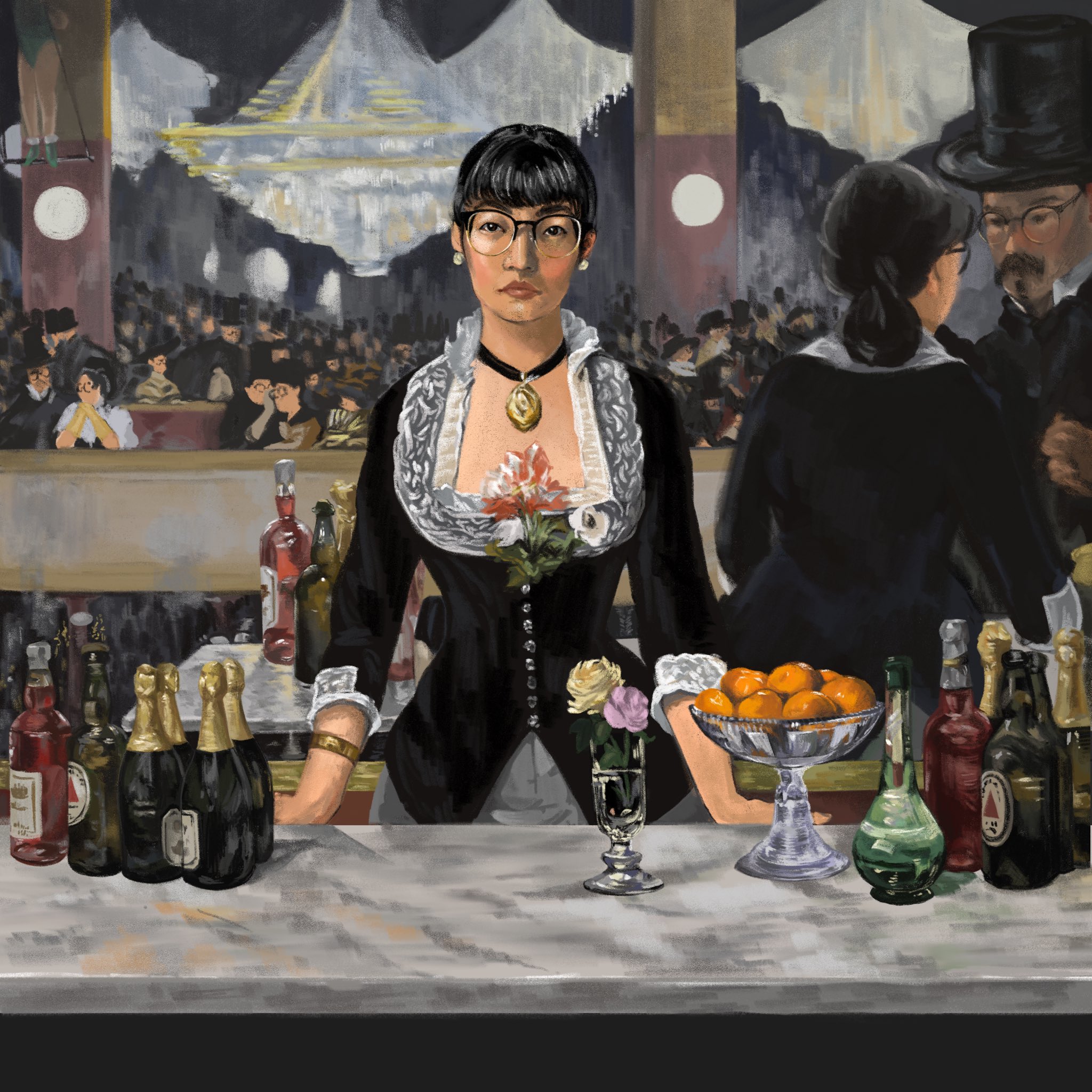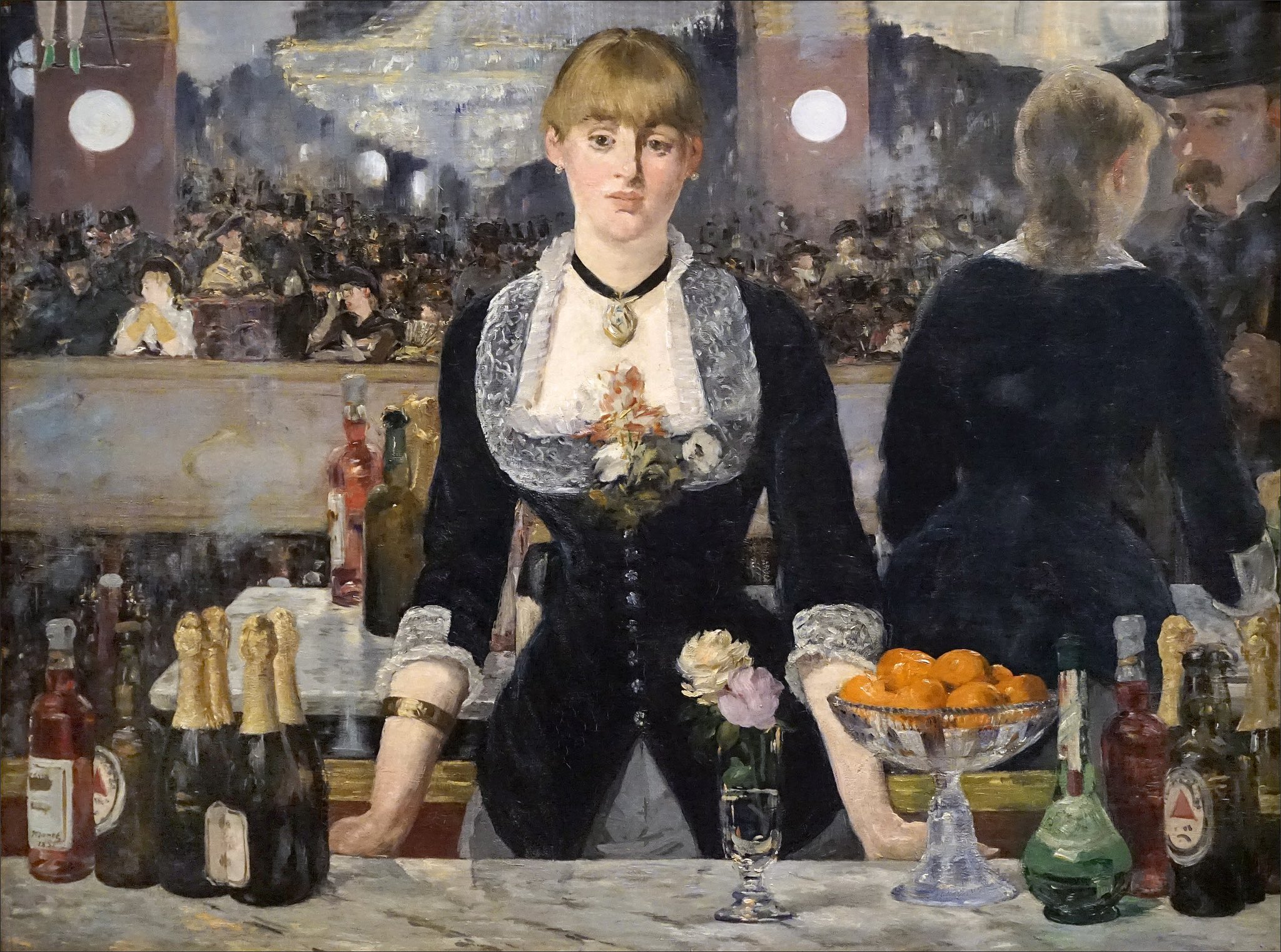94/100
Bar at the Folies-Bergère
-
Artist
Édouard Manet
-
Year
1882
-
Culture
French
-
Date of Copy
I don't think I can do this painting justice with my own words--I'd recommend reading Phillip Pullman's essay about it in Daemon Voices. My best summary is that it's about glittering yet deceptive surfaces, most obviously seen via the background which is a huge mirror that shows an incorrect reflection.
It's also about the place of women in public, which at that time was all tied up with prostitution. I ended up reading a fair amount about this era of Parisian society, and learned that artists of the time were obsessed with prostitutes and cafe-concert performers, who often had bawdy acts and were assumed to be sexually available. Manet did a few other famous paintings of women that seem to me to investigate similar themes: Le Déjeuner Sur L'Herbe (aka the Luncheon in the Grass) which features a nude woman having a picnic with clothed male companions, and Olympia which features a reclining prostitute who gazes confrontationally at the viewer. (The public hated Olympia, by the way--they'd go to the gallery just to hate-look at it and laugh. There were political cartoons and everything.)
This was also painted during a time of rapid modernization. Baron von Hausmann was renovating Paris to be a city of wide boulevards rather than narrow medieval streets and new railroads were making travel faster than ever. The social order was changing rapidly, with rapacious capitalists on the rise and nobility losing its cachet. You can see artists who worked in this time period like Manet, Degas, and Toulouse-Lautrec swept away by the changes and fascinated with the spectacle, while also using art to wonder about the new social order and morality. I wonder what Manet thought of this girl, and what he imagined she was thinking.
The Painting of Modern Life by T.J. Clark was a great read that explained the cultural milieu that Manet was working in, and I really enjoyed it. The MFA Boston's YouTube channel also has some excellent lectures on French art in this time period.
I also recommend the novel L'Oeuvre by Emile Zola as a great depiction of the Impressionist scene. Zola was a writer active at the same time as the Impressionists, and he was a champion for them when the public still found them too off-putting. He loved Manet, was childhood friends with Cezanne, and was interested in the same themes. L'Oeuvre is part of his epic 20-book Rougon-Macquart cycle, which covers a large swath of French society via several generations of the titular Rougon-Macquart family. L'Oeuvre is about a a painter whose first big splashy work is clearly based on Manet's Dejeuner Sur L'Herbe. (And in a separate novel, a different Rougon-Macquart family member named Nana becomes a high class sex worker, just to underscore the cultural obsession with prostitution and the changing role of women in society at the time.)
My last 10 entries were redos of paintings I'd attempted at the beginning so that I could compare progress and give the original artworks their proper due. You can see my first swing at Bar at the Folies-Bergère at entry 15.
Reference image is from Wikipedia. It is now at the Courtauld Gallery in London.

